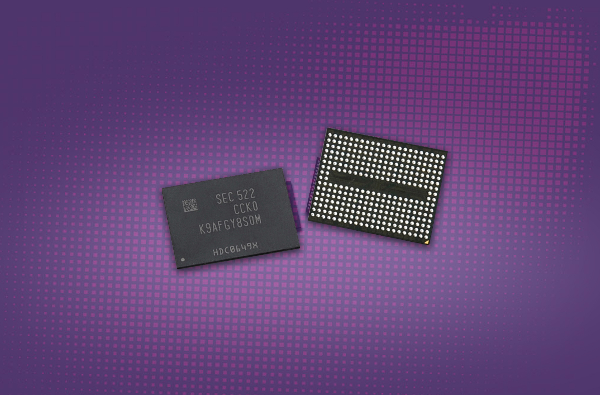Samsung Begins Mass Production Of 256 Gbit 3-bit Per Cell V-NAND
All of the flash manufacturers have announced 3D NAND, but only Samsung has shipped the exotic flash in retail products. V-NAND first shipped from the company with 24 layers in a specialized enterprise focused SSD. It wasn't until Samsung shipped the 850 Pro and 850 EVO with 32-layer V-NAND that the technology really impacted the market.
Just weeks ago, Samsung announced a leap to 48-layer V-NAND, and then the 850 Pro 2 TB retail SSD came to market. The early 850 Pro products shipped with 86 Gbit die density in 32-layers, but the new MLC increased the density to 128 Gbit. Working the math out reveals the increased number of layers matches the density increase, but Samsung didn't specify if the new 128 Gbit V-NAND was the breakthrough responsible for this new capacity class of client flash storage.
The new product announced today uses 48-layer 3-bit per cell (TLC) NAND and takes the density up to 256 Gbit. This is double the previous die density of Samsung's 3D TLC, the same flash used in the popular 850 EVO products.
"Samsung's new 256 Gb 3D V-NAND flash doubles the density of conventional 128 Gb NAND flash chips. In addition to enabling 32 gigabytes (256 gigabits) of memory storage on a single die, the new chip will also easily double the capacity of Samsung's existing SSD line-ups, and provide an ideal solution for multi-terabyte SSDs," said Samsung in its release materials.
Samsung claimed a 30 percent power reduction over existing 32-layer V-NAND. The company will leverage the new 3rd generation V-NAND technology to produce both client and enterprise SSDs in higher capacity sizes. We expect to see new products in the coming months and lower prices on existing products. Samsung didn't state if the new products will replace the popular 850 series, but we expect to see a new series before the end of the year.
Samsung did hint in the press release that leading-edge PCIe NVMe and SAS interface products are in the works, but these new products will focus on the enterprise sector.
Chris Ramseyer is a Contributing Editor for Tom's Hardware, covering Storage. Follow him on Twitter and Facebook. Follow Tom's Hardware on Twitter, Facebook and Google+.
Get Tom's Hardware's best news and in-depth reviews, straight to your inbox.

Chris Ramseyer was a senior contributing editor for Tom's Hardware. He tested and reviewed consumer storage.
-
2Be_or_Not2Be I'm interested in seeing a 48-layer V-NAND MLC-based product. The 2TB drive was supposedly based on 32-layer V-NAND, according to the past test: http://www.tomshardware.com/news/samsung-256gb-v-nand,29807.htmlReply
